50 years of Peace: Celebrating the Peace Foundation’s Enduring Legacy

In 1975, the Peace Foundation was formed with the vision of building peaceful communities at the local, national and global levels. This charitable organisation continues to flourish thanks to the dedication of its staff, Council, interns, volunteers, funders, and other supporters in the community.
Over the last 50 years, the Peace Foundation has implemented a range of programmes and organised many events, some of which are annual. Some of its achievements are:
- 33 years delivering the Cool Schools Peer Mediation Programme in primary schools
- 31 years delivering the secondary programme – now known as Leadership through Peer Mediation (LtPM)
- 15 years delivering Responding to Armed Conflict (REACT) workshops in secondary schools
- 23 years organising and delivering annual Youth Peace Symposiums
- 15 years of developing resources for and delivering the annual Youth Peace Week in schools
- strengthening te Ao Māori content and perspectives in Peace Foundation’s mahi, including reviewing its key resources to reflect this in 2022
- establishment of annual Te Pou o Rongo symposiums for rangatahi Māori (Māori youth)
- development and publication of key resources to support peer mediation and conflict resolution programmes in schools.

Over the years Peace Foundation Aotearoa has worked in many other ways, often in cooperation with other people and organisations, to realise its vision of a more peaceful and fairer Aotearoa and world. Some of this mahi included:
-
annual peace lectures, as well as seminars, conferences (such as the World Without War Conference in 2015) and speaking tours
-
bringing world leaders in peace studies to Aotearoa as lecturers/speakers (such as Professor John Galtung, Dr. Helen Caldicott, John Pilger, Professor Noam Chomsky, etc.)
-
operating a mobile peace van which travelled to schools promoting peace
-
working in the 1980’s, with the then Department of Education, to develop Peace Education Guidelines and having input into the revised New Zealand Curriculum in the 1990s
-
playing a central role in the passing of the Nuclear Free Zone Act and the Disarmament and Arms Control Act
-
advocacy and work towards establishing Chairs of Peace Studies in universities in Aotearoa, culminating in the establishment of the Centre for Peace and Conflict Studies at the University of Otago
-
working collaboratively to achieve a World Court ruling against the use of nuclear weapons, as contrary to international and humanitarian law
-
designation of Auckland as a City for Peace
-
establishment of Media Peace Awards
-
planting Pohutukawa trees for Peace.
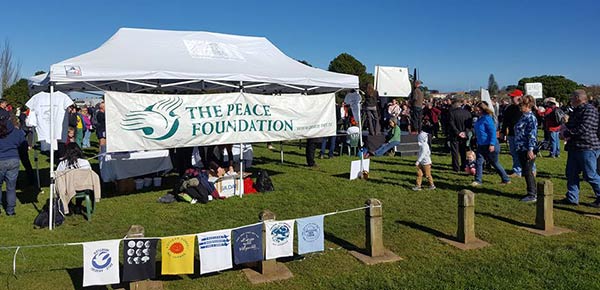
Members of the Peace Foundation played a key role in the establishment of The Disarmament and Security Centre in 1998. This initially operated under the Peace Foundation, until it became a separate legal entity six year later.
It is impossible in this short summary to acknowledge all the people involved in the formation of what was initially known as the Foundation for Peace Studies Aotearoa/New Zealand (now Peace Foundation Aotearoa) and its ongoing work. However, it is important to acknowledge the Quaker community and individuals such as Dr. Kate Dewes who played pivotal roles. The Peace Foundation’s South Island office operated for many years from Kate’s home, and over a 20-year period she oversaw and/or taught Peace Studies papers at the University of Canterbury.
Pauline Tangiora, a respected Māori kuia and social justice and peace advocate has served as patron to the Peace Foundation since 1993. Another stalwart was Alyn Ware who spearheaded the Mobile Peace Van initiative. Yvonne Duncan played a critical role in the 1991 introduction of the Cool Schools Peer Mediation Programme and in the work of STEP (Students and Teachers Educating for Peace). Amazingly, the Cool Schools programme continues today. Christina Barruel, the present Head of Peace Education, has given over 30 years of passion and commitment to the Peace Foundation’s mahi. It is incredible that 50 years on, the Peace Foundation continues to offer innovative programmes promoting peace, co-operation, respect and conflict resolution.
Introducing Vita Manuputty: Our New Peace Education Programmes Admin
In May this year, we farewelled Mari Gordon and welcomed Vita Manuputty to the Peace Foundation team. Vita is our new Peace Education Programmes Administrator.
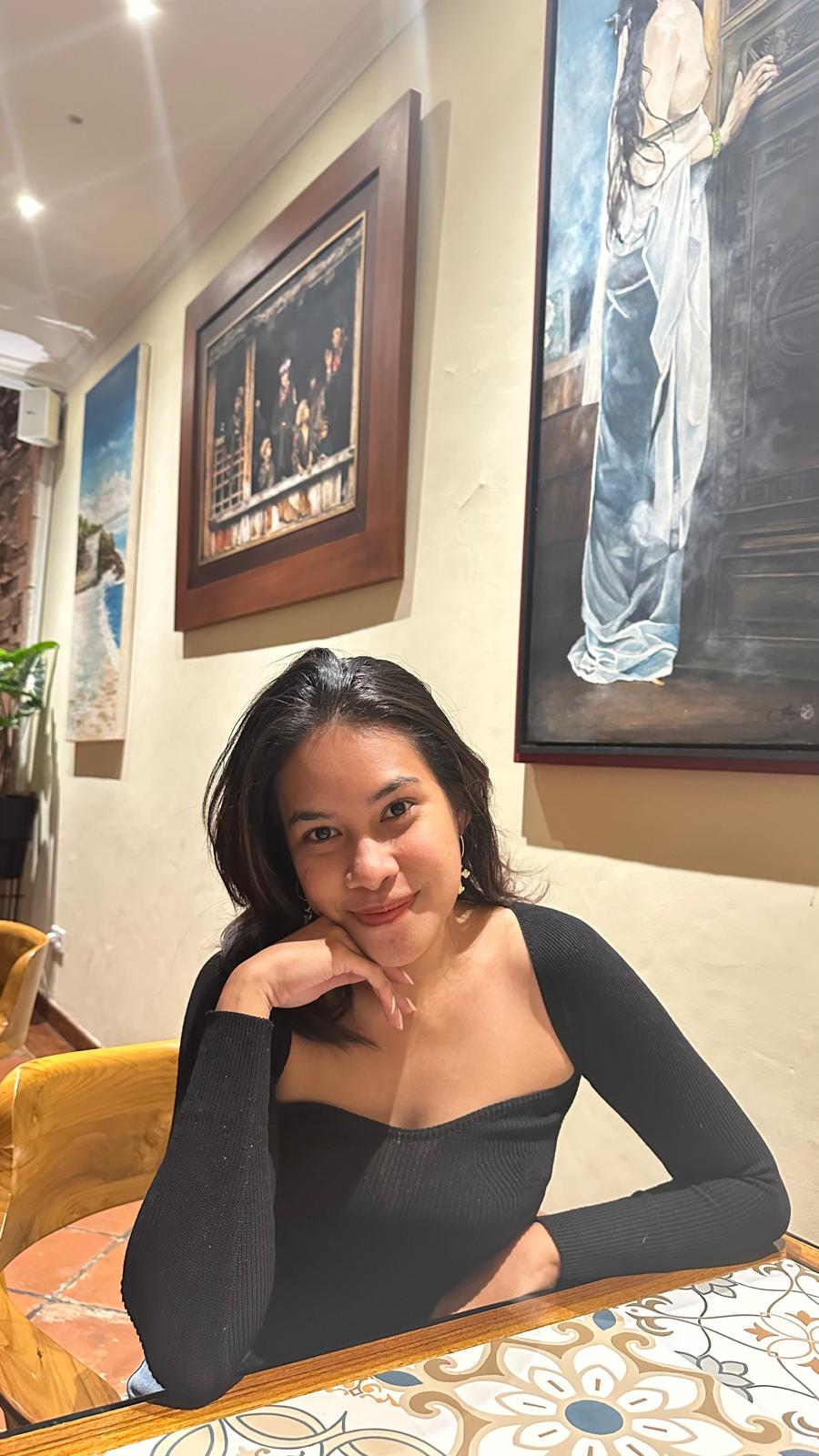
Above: Vita Manuputty, Peace Education Programmes Administrator
Kia ora, my name is Vita. I moved to Aotearoa New Zealand in February 2024 to pursue a Masters in Public Policy at the University of Auckland and am currently writing my dissertation on education policy for Indigenous peoples
I’m drawn to join The Peace Foundation whānau because of the incredible mahi it does with schools and communities across the country—promoting peace, effective communication and conflict resolution from an early age.
I was born in the Moluccas Islands in Eastern Indonesia, where we uphold Pela Gandong, a traditional value rooted in harmony and brotherhood. This philosophy is integrated into education to foster peace and mutual understanding among our young people.
By joining the Peace Foundation, I hope to carry the spirit of Pela Gandong to inspire peace and understanding and support the Peace Foundation’s continued growth and impact.
Building Resilience Through Culture: Māori Youth Symposium Inspires and Empowers
A powerful day of learning, laughter and legacy as rangatahi explored culture, healing and community through workshops, games and kōrero.
Read more below:
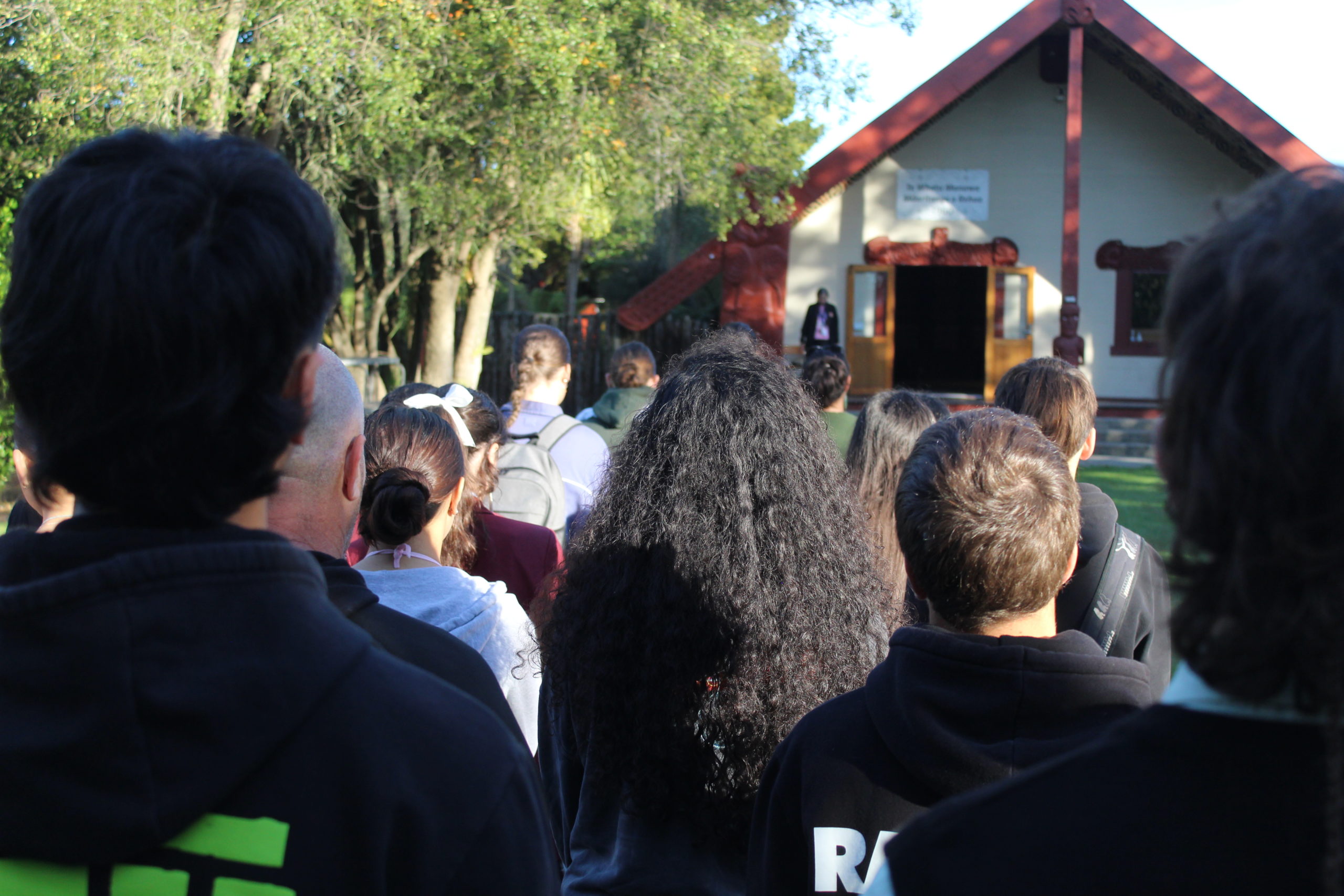
Above: Pōwhiri led by the mana whenua (Rehua Marae hosts) welcoming manuhiri (guests)
On the 16th of May, Māori youth from Ōtautahi – Christchurch met at Rehua Marae for the annual Māori Youth Peace Symposium. The focus of the day was: Connecting Rangatahi with their Culture and Identity to Build Strength and Resilience.
The day began with a pōwhiri led by the mana whenua (Rehua Marae hosts) to welcome the manuhiri (visitors). The pōwhiri was followed by sharing of kai (food) and an opportunity for whakawhanaungatanga – taking time to meet, greet, share about oneself, learn about others and build relationships.
In the morning two respected and strong Māori wāhine presented. Ariana Stevens, owner/director of Reo Māori Mai, a company committed to upholding Te Tiriti and promoting te Ao and te Reo Māori, spoke first. Ariana talked about the impact of colonisation on Māori wellbeing, and the journey towards revitalisation. Reo Māori Mai workshops have a relational focus, encouraging respectful but courageous conversations, self-awareness, self-regulation and responsibility.
After Ariana, Deirdre Panapa from DP Herbals talked about the need for a more integrated understanding of wellbeing, ways to create inner peace and positive relationships with others. Deidre shared the Te Whare Tapa Whā model of wellbeing and how this influences her mind-body approach to reducing stress, addressing trauma and enabling healing, and mental and physical health.
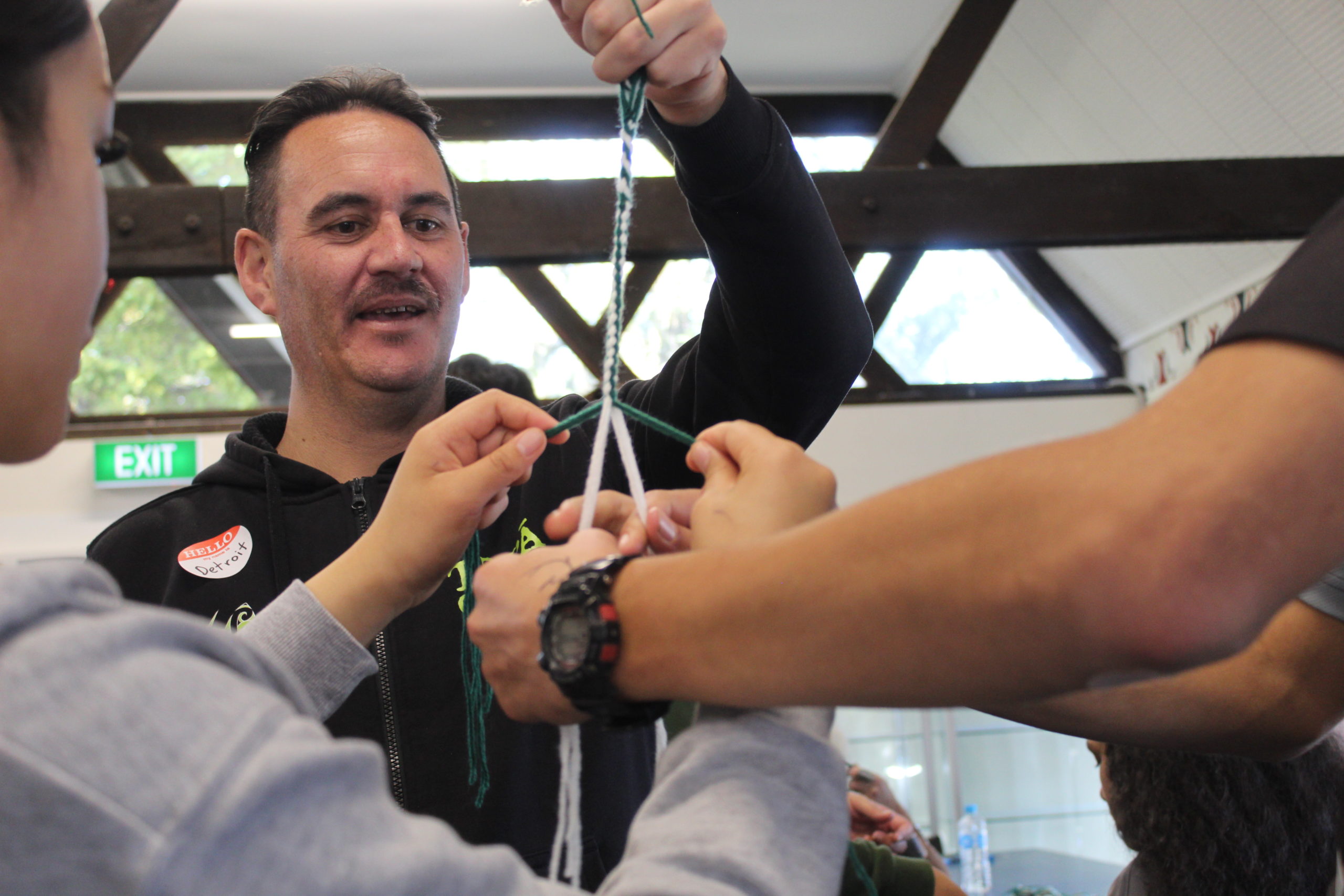
Above: Poi making activity at the event
In the afternoon, rangatahi (youth) learned about two traditional games/activities and how these can foster wellbeing and relationships. Many of the participants were unfamiliar with the first activity, Ki o Rahi. This is a traditional Māori ball game, played by two teams on a circular field. The game is based on the legend of Rahitutakahina and the rescue of his wife Tiarakurapakewai. The game requires team cooperation, fitness and skill. For the rangatahi there was lots of laughter, running, sidestepping, passing and catching, blocking and shooting/throwing.
The final activity was making poi. Again, the facilitator emphasised the origins, meaning and purpose of poi making and use. Rangatahi worked alongside each other making poi and having fun with their poi.
A huge thanks to the Rata Foundation for funding this gathering and to the rangatahi Māori (Māori youth) who helped plan the event. Special thanks to Andrea Read, he wahine toa, who also helped plan and facilitate the day. This team was indispensable for the event organiser, Tracy Scott, the Peace Foundation’s South Island facilitator.
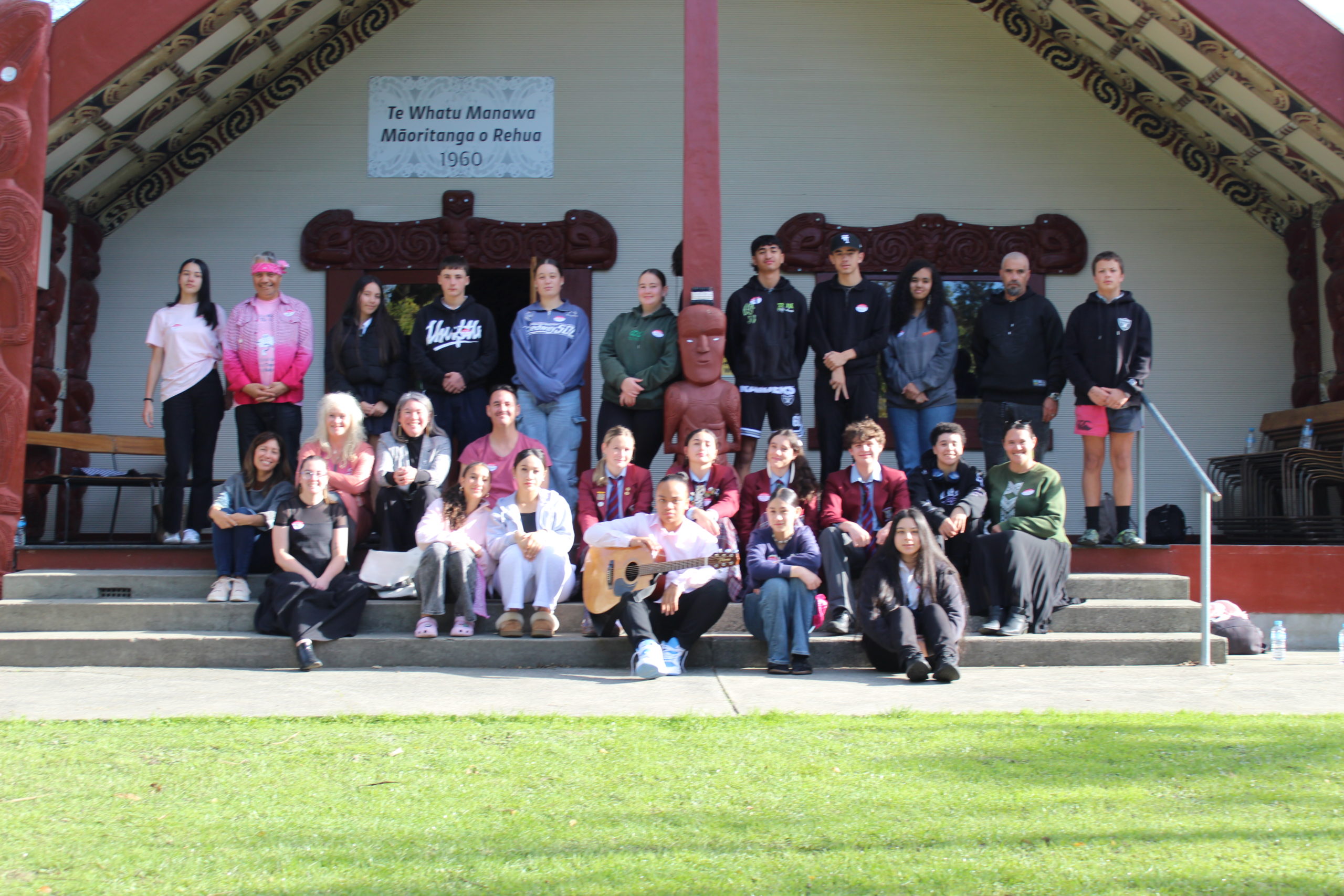
Tamariki Lead the Way: Peer Mediators’ Big Day Out in Canterbury
Students from eight schools came together to celebrate their role in resolving conflict peacefully—and had a lot of fun along the way!
Read more below:

Above: Participants of the Canterbury Mediators’ Big Day Out at Oaklands Primary School in May 2025.
Peer mediators from Canterbury schools came together on 21st May 2025 for their Big Day Out celebration. This was hosted by Oaklands Primary School, in Halswell. Over sixty tamariki (children) from eight schools attended, with ten coordinators and some parents. The day included games, activities and food, as well as presentations to tamariki for their commitment to peer mediation.
The special guest speaker was the amazing Andrea Read. She explained to akonga (students) how the nervous system responds to stress and fear. She also shared tikanga Māori perspectives about how to better manage these challenges. Mediators were especially interested in Te Whare Tapa Whā model (developed by Sir Mason Durie).
The four sides of the wharenui (meeting house – main building on a marae) represent the four dimensions of holistic wellbeing, namely:
- taha tinana (physical wellbeing – health)
- taha hinengaro (mental and emotional wellbeing)
- taha whānau (social wellbeing, including self-esteem)
- taha wairua (spiritual wellbeing – personal beliefs)

Above: Special guest speaker, Andrea Read sharing tikanga Māori perspectives on how to manage wellbeing.
The whare tapa whā is often visually depicted with the foundations, representing whenua (land and roots). The key message for mediators was that when these things are in balance, we are healthier and happier. This balance is a necessary foundation for individual, societal and global peace – rongomau. .
A big shout out to Oaklands Primary School for hosting this event, to Tracy Scott (South Island Peace Foundation school programmes facilitator) for organising the day and to the Peace Foundation for providing the funds.
Help Students Make Sense of a World in Conflict
At this moment, we are experiencing a period of extreme unrest, with war between Russia and Ukraine, Israel and Palestine, escalating conflict between Israel and Iran, as well as civil conflicts in Africa, Myanmar and elsewhere. There is heightened risk that these conflicts could escalate into global conflicts.
The Peace Foundation offers teachers and students FREE workshops that explore peace, conflict, and current affairs. These workshops provide a constructive context to discuss and better understand our unsettled world.
Responding to Armed Conflict (REACT) Workshops are:
-
offered in-person or virtually
-
interactive and challenging
-
filled with highly relevant insights into today’s global context
-
empower rangatahi (youth) with knowledge on disarmament
-
provide a platform to discuss peaceful conflict resolution.
We are happy to tailor workshops to your kura (school) and akonga (students) interests. If your school is interested in a different topic, contact us and we will see how we can help. Workshops are best suited for groups of 15+ people.
Present topics include:
-
The United Nations Sustainable Development Goals
-
The Israel/Palestine Conflict
-
The Russia/Ukraine Conflict
-
Atomic Bombings of Hiroshima and Nagasaki (1945)
-
North Korea
-
Uniting for Peace
-
Uniting for Climate Action
-
Uniting for Education.
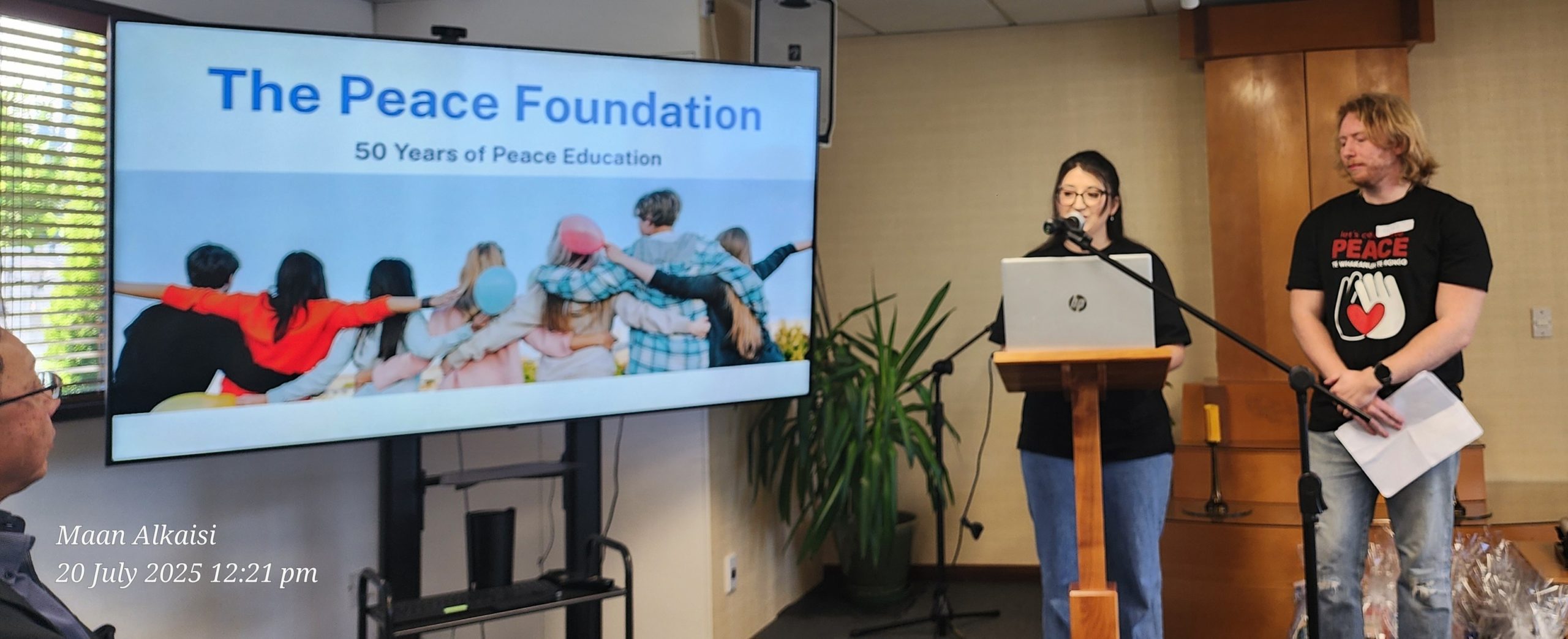
A Timely Reminder - Forty Years On - The Rainbow Warrior
What connects a sunken ship, nuclear disarmament, and New Zealand youth learning to respond to global conflict?
Read more below:
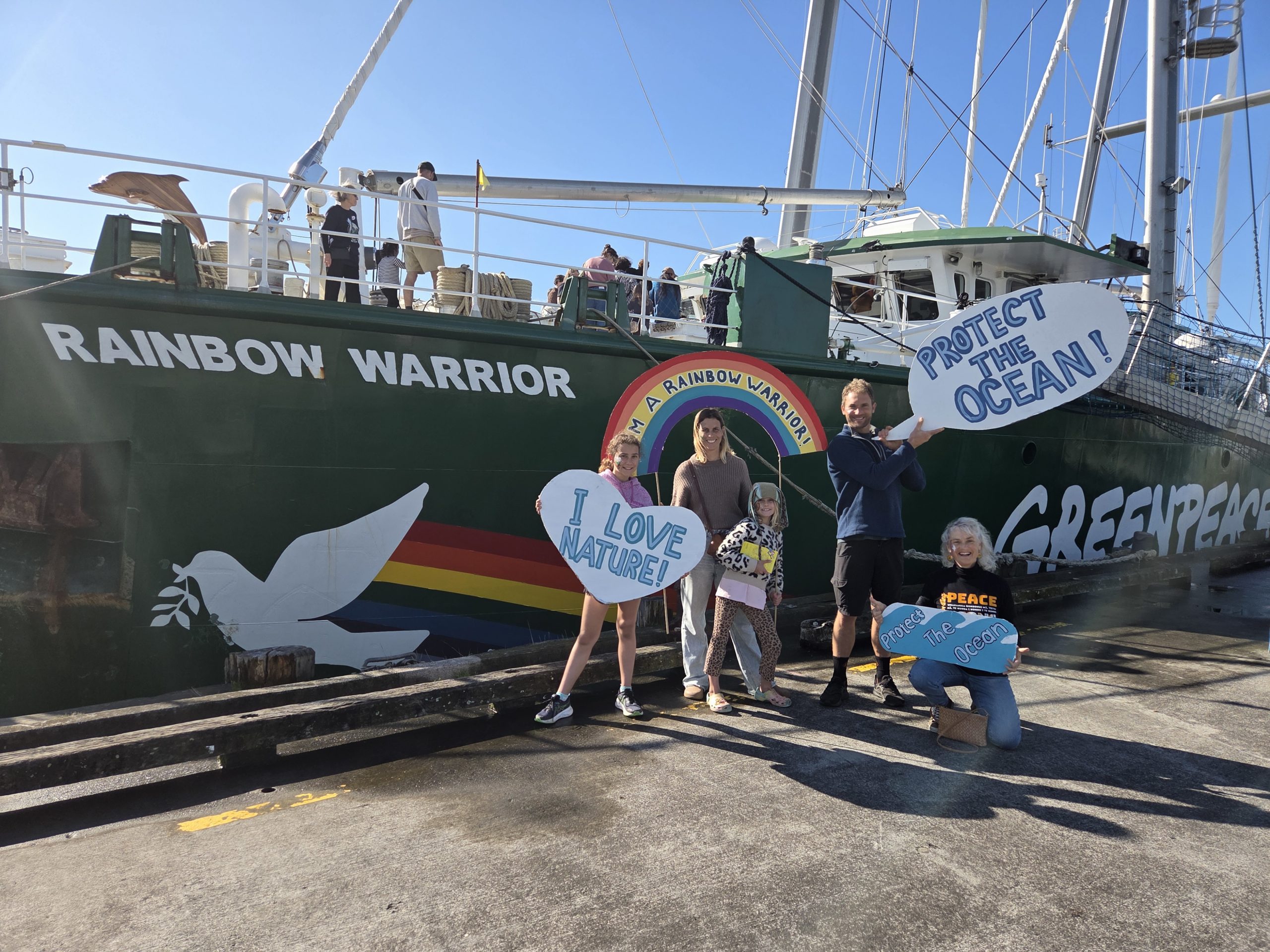
Above: Members from the Peace Foundation whānau attend the last public Open Day to board the Rainbow Warrior III on Sunday 20th July, 2025.
Did you know that there is a link between the Auckland sinking of the Greenpeace ship, Rainbow Warrior, and the Peace Foundation’s ongoing work? Each year the Peace Foundation receives a grant from DEUNIF (Disarmament Education United Nations Implementation Fund). This money is used to fund the development and delivery of Responding to Armed Conflict (REACT) workshops.
The source of these funds is reparation from France for the sinking of the Rainbow Warrior in New Zealand waters. The fund is administered by Internal Affairs – Te Tari Taiwhenua and has an educational focus. Individuals and organizations can apply for funds to support projects and research related to international peace, arms control and disarmament.
The sinking of the Rainbow Warrior catapulted public awareness and outrage about France’s nuclear testing in the Pacific. Two years later, New Zealand implemented the Nuclear-Free Zone, Disarmament and Arms Control Act. This act remains in place, however, there is growing concern that it may be compromised in the future.
On July 10th, 2025, staff members from the Peace Foundation attended the 40th Anniversary Memorial Ceremony of the 1985 sinking of the Rainbow Warrior. This was held on the Rainbow Warrior III, which was berthed for the occasion at Halsey Wharf, Wynyard Quarter, Auckland Central. It was a peaceful event, attended by many of the individuals involved in the work following the 1985 bombing.
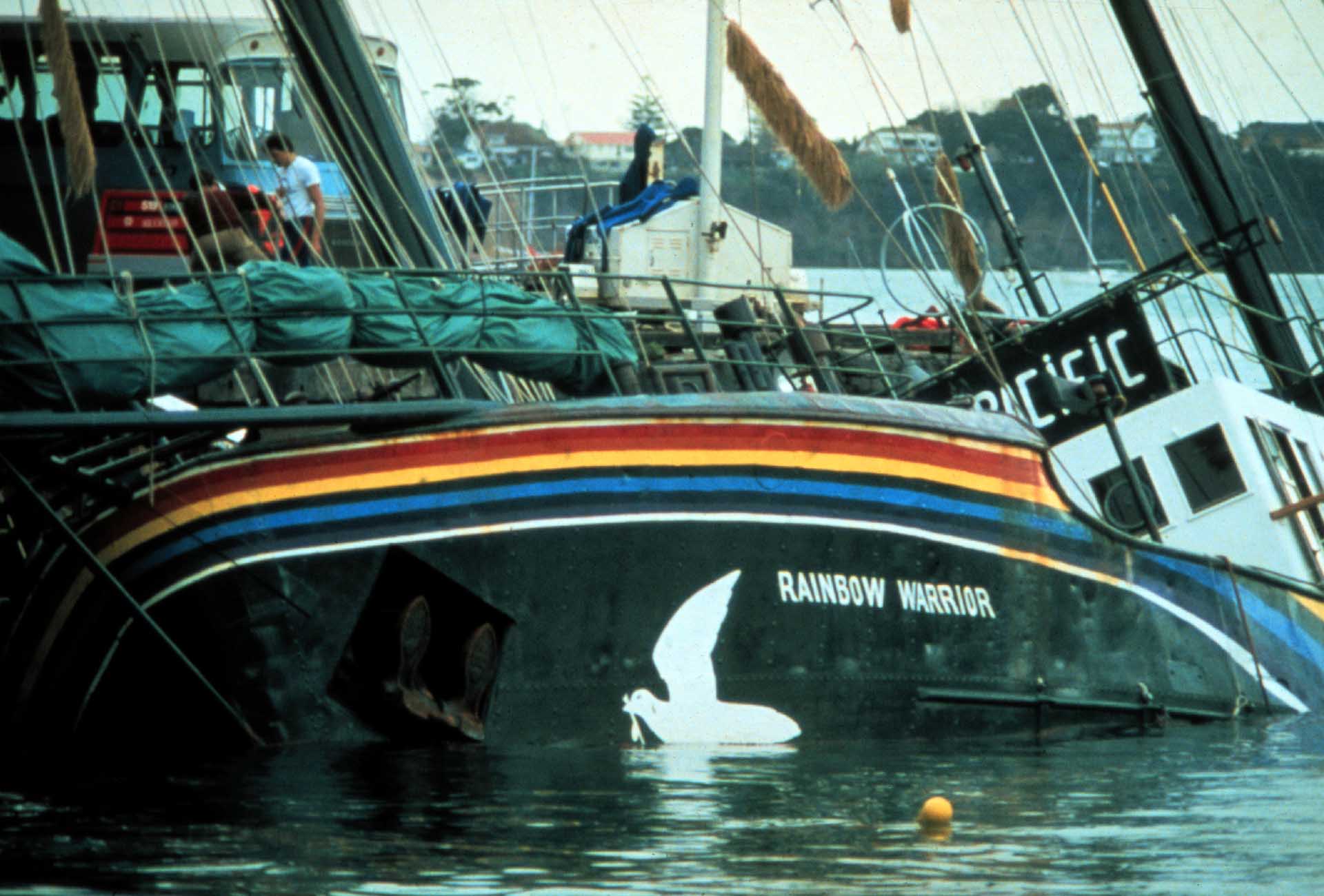
Above: Forty years ago, the Rainbow Warrior sank at its mooring in Auckland.
90 Years of the Dalai Lama: A Life Devoted to Peace and Compassion
As he turns 90, we reflect on His Holiness’ special meeting with student mediators in Aotearoa and the teachings that still guide them.
Read more below:
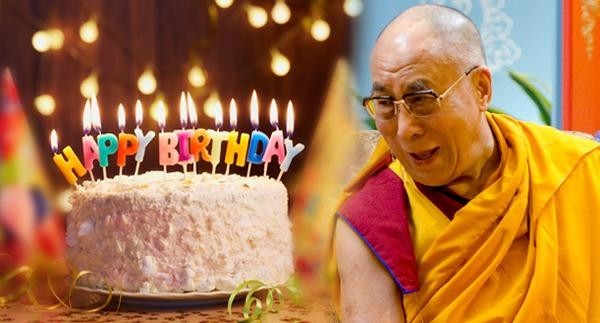
On the 13th of July this year, people around the world celebrated the Dalai Lama’s 90th birthday. The Dalai Lama was born in Takster, Tibet, and at the age of five was appointed as the 14th Dalai Lama. When he was 15, China invaded Tibet and political turmoil ensued. This culminated in the 1959 uprising against China and the Dalai Lama and others fleeing to India.
For 65 years the Dalai Lama has resided in Dharamshala, Northern India, with thousands of other Tibetan exiles. During this time, he has travelled to over 60 countries, received over 150 awards and met with heads of state, respected scientists, philosophers, religious leaders and ordinary citizens. People marvel at his wisdom, humility, kindness and humour.
In 1988 the Dalai Lama proposed a Middle Way Approach to Tibetan autonomy. His commitment to a non-violent pathway forward led to his 1989 Nobel Peace Prize. In 2011, the Dalai Lama retired from political life, however, he remains a much loved and respected spiritual leader for Tibetans and others across the globe.
Throughout his life, the Dalai Lama has been a prolific writer. He has written/co-written over 120 books on topics ranging from Buddhism, Tibet, the importance of kindness and compassion, philosophy, meditation, climate change and finding joy. A favourite is his Book of Joy.
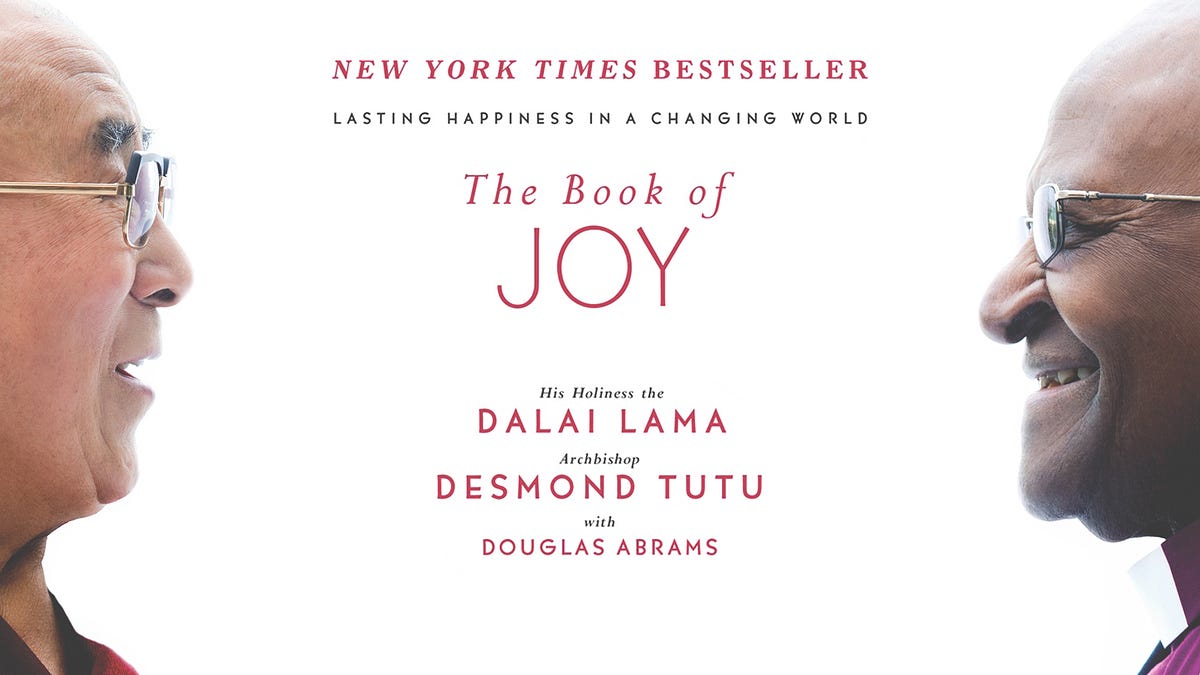
The Book of Joy is a conversation between the Dalai Lama and Archbishop Desmond Tutu about building understanding in the world and finding genuine joy in our lives. They propose that joy is much deeper than superficial happiness – joy is an enduring inner state, that requires healthy interconnectedness (where we recognise our shared humanity and show empathy and generosity towards others). Together they propose eight pillars of joy. Each pillar represents a key value to nurture in our individual and collective lives. The eight pillars are: perspective, humility, humour, acceptance, forgiveness, gratitude, compassion and generosity.
The relevance of the eight pillars of joy in our unsettled world cannot be overstated. Taking the first pillar, perspective, the relevance is immediately apparent. The Dalai Lama and Tutu propose that as individuals and societies, we must intentionally nurture ‘well-rounded’ perspectives. This involves actively seeking to understand what others think and why they act in certain ways. It involves the acknowledgement of differences and the simultaneous recognition of our shared human qualities. Many of the pillars have direct relevance to the Peace Foundation’s work in schools, namely building mediation and conflict resolution skills, including genuinely listening to and respecting the perspectives of others.
The Dalai Lama had a private audience with The Peace Foundation NZ on the 11th of June 2013, in Auckland as part of a larger visit to the country. This event was significant as it coincided with the endorsement of the Auckland City for Peace Declaration by His Holiness. A small group of students from primary and secondary schools (Cool Schools and LtPM peer mediators) were invited to meet the Dalai Lama. His Holiness signed the Peace Declaration with Yvonne Duncan, president of the Peace Foundation’s Council at the time.

Youth Peace Week
August 3rd – 9th
This week-long event aims to create discussion in your kura (school) about how we can help create a more peaceful world. It especially hopes to encourage creative ideas for ACTION towards this goal.
Schools, organisations and individuals can use the Peace Week Toolkit. The kit has been devised by our Youth Programme Coordinator and Youth Peace Ambassadors (a team of committed youth!). This year’s theme is named, “Peace Fest: Let’s Celebrate!- Te Hui Taurima a Rongo: Whakanuia!”
Youth Peace Week is a national event. All schools can access the toolkit, which has a wide range of engaging ideas and activities that are suitable for primary, intermediate and secondary school students.
Register Now and get a FREE digital copy of the Youth Peace Week Toolkit!
Registration closes Saturday 2 August 2025
Secondary Schools’ Youth Peace Symposium in Tāmaki Makaurau
August 22nd
This year, the 2025 Youth Peace Symposium is celebrating its 21st anniversary at a new and exciting venue, the SGI Cultural Centre in Ellerslie. This is an opportunity for students to come together in peace and harmony to:
-
listen to and be inspired by outstanding young leaders, making a difference in the world
-
share their Youth Peace Week ideas, activities and projects
-
raise awareness of te mana o te kotahitanga, the power of group unity
-
enjoy song and dance performances by youth for youth
-
fill up their own Goody Bag to take away
-
network with rangatahi from other kura
-
participate in a symposium composition with drums, percussion and other instruments
Registration closes Friday 8th August
Tāmakai Makaurau Cool Schools Two-Day Coordinators’ Workshop
August 13th & 14th
Join us for a hands-on, two-day workshop designed for primary teachers to strengthen your conflict resolution skills and learn how to set up a successful peer mediation service at your kura. Walk away ready to train and support student mediators who can confidently manage playground disputes and lead by example.
Cool Schools Teacher Training Day – Te Tai Tokerau (Whangārei Venue)
August 28th
This practical one-day workshop will give you the skills and confidence to train a team of ākonga as peer mediators. Perfect for first-timers or kaiako wanting a refresher on the Cool Schools Peer Mediation Programme.
Includes a follow-up Google Meet hui with facilitator Christina Barruel on Thursday 4th September, 3:30–4:30 p.m., packed with tips to keep your mediator team thriving.

Our Special Pick for Kids:
Wherever I Go
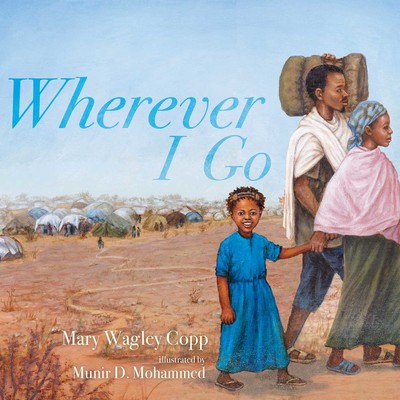
Written by Mary Wagley Copp
Illustrated by Munir D Mohammed
Antheneum Books for Young Readers, New York, 2019
ISBN 9781534419193 (hardcover)
ISBN 9781534419209 (eBook)
Picture book Juvenile/older reader (5-10)
Key words: refugee, refugee camp
This beautiful story is about a little girl in a refugee camp in Northern Ethiopia. Abia’s story illustrates the braveness and resilience of children living in these situations. Her father crowns her queen of the camp because of all the children she has been there the longest. Munir Mohammed’s magnificent illustrations depict Abia marching her soldiers (friends) around the outskirts of the camp, collecting and carrying water from the well and joining the lengthy ration line. In each of these contexts, Abia and her friends create fun and enjoy being children.
Within the book there is a second story, repeated often by her parents. This is the story of the family fleeing ‘yelling men and their rattling trucks’. Abia and her family are finally resettled, learn a new language and a new way of life, but wherever they go, they carry their story with them.
This book includes useful teaching resources. At the back, there is a list of digital resources, and middle grade to young adult books about refugees and resettlement. It includes photos and a summary of relevant facts. The author challenges us with startling figures, such as 68 million displaced people, of whom about 25 million are refugees. Sadly, many remain in camps, and few are resettled. The story and resources are pertinent to the present plight of the Palestinian people. Highly recommended.
Our Top Pick for Adult Readers:
How Civil Wars Start and How to Stop Them
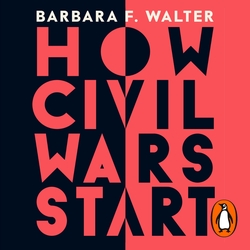
Author: Barbara F. Walter
Released: April 2024
ISBN 9780593137802
Penguin Books Ltd
Highly recommended
This is a well-researched and easy to read book. It explores ideas that are highly relevant to our present time. Walters argues that a country is more likely to engage in civil war when “it is moving towards or away from a democracy.” She explores why periods when a country is transitioning from autocracy to democracy are dangerous. Particularly relevant to today, she explores the risk of civil unrest and conflict when well-established democracies slip in their enactment of sound democratic practice.
The Centre for Systemic Peace (hrrp://www.systemicpeace.org) has developed a Polity score. This looks at aspects of political practice and governance and places countries on a continuum, ranging from -10 fully autocratic to +10 fully democratic. Countries that sit in the middle, between -5 to +5, are identified as anocratic. These countries have elements of autocratic and democratic practices. Anocratic countries, especially those falling between -1 and +1, are at the greatest risk of civil war. This risk increases when factionalism, fostered by leaders who create fear, mistrust and division, exist within a country.
Walters observes the recent trend of backsliding in ‘well-established’ democracies, such as USA, India, Hungary, etc. and the impact for that country, international relationships and world peace. She investigates how social media provides a platform for misinformation, disinformation and fuels factionalism. In this way, social media plays a pivotal role in undermining good governance and trust in governance.
Citing her own and others’ research she outlines ways in which we could avoid civil unrest and outright war, by improving governance. Key to this is a ‘transparent and participatory political environment and limited power of their executive branch.’ She quotes James Forbes’s key features of effective democracy, namely; rule of law, voice and accountability and government effectiveness. Closely linked to these areas are the importance of fair and transparent electoral processes and a strong and independent judicial system.
In this very engaging book, Walters documents how some contemporary political leaders are deliberately using their leadership and social media to undermine the judicial and electoral systems and the publics’ trust in these areas. Of particular concern to Walters are leaders that she calls ethnopreneurs. These leaders target minority groups, stirring feelings of resentment and fear, often along ethnic or religious lines. In so doing they intensify factionalism within their country and increase the risk of civil unrest.
Finally, Walters explores how civil unrest and conflict in contemporary, especially Western, societies will not necessarily look like traditional civil (military) conflicts. Rather they will take on new forms of expression. This summary is just a snapshot of the many ideas covered in this fascinating book. A highly recommended read and a very useful resource for intermediate and secondary school teachers.
Recent Comments